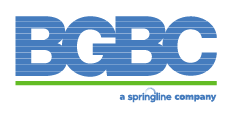By Ellyn Bess, Kim Flett, and Beth Garner
When employees hear that their company offers a Health Savings Account (HSA), many fail to make the connection to how these tax-advantaged accounts for qualified medical expenses can help them prepare for a successful retirement. But with healthcare being one of the biggest expenses people face in retirement, HSAs can play an important role in creating a healthy retirement plan.
A couple retiring in 2019 is expected to spend $285,000 in health and medical expenses throughout retirement, according to Fidelity Investments. For most Americans, it will take years of planning and investing to reach that savings goal. Fortunately, HSAs can significantly accelerate those efforts by offering myriad tax advantages.
There is a great deal of confusion among employees about how HSAs work, which creates a powerful opportunity for employers to educate employees about how these vehicles can augment their 401(k), IRA and other retirement savings accounts. Doing so effectively can result in more engaged employees and better retention of top talent.
Addressing Confusion About HSAs
Often, employees confuse the HSA with the Flexible Savings Account (FSA), another type of healthcare savings vehicle. While employers can offer both accounts, the FSA can be paired with any health plan. Employers own and contribute to the FSA on behalf of the employee, and funds can only be used for eligible medical expenses. In addition, most FSAs have a “use-it-or-lose-it” rule, which means the unused balance in each account is forfeited by the employee at the end of the plan year (or its grace period).
HSAs, on the other hand, are owned by the employee, don’t have an annual “use-it-or-lose it” rule and must be paired with a high deductible health plan (HDHP). For 2020, the IRS defines a HDHP as any plan with a deductible of at least $1,400 for an individual or $2,800 for a family. HSA contributions go in tax-free, grow tax-free, and are withdrawn tax-free when used for qualified medical expenses.
In addition to this triple-tax benefit, other attractive aspects of HSAs include:
- Most HSAs can be invested (after a certain threshold is met), just like a 401(k)
- HSA contribution limits for 2020 are $3,550 for people with individual coverage and $7,100 for people with family coverage; people age 55 and older can make $1,000 annual catch-up contributions
- HSAs are portable after an employee leaves a job
- Employees can make contributions to HSAs for a given year until April 15 of the following year
- HSA dollars can be used to pay for qualified medical expenses not covered by insurance
- Account holders who are 65 and older can use HSA dollars to pay for any kind of expense, not just healthcare, without penalty; non-healthcare withdrawals for seniors, however, are taxed at the user’s marginal rate, just like a traditional 401(k)
- Users can pay out-of-pocket for healthcare expenses, hold onto the receipts and then cash them in for a tax-free payout; there is no time limit for these transactions
It is important to note that employers may choose to contribute to employees’ HSAs. Just like a 401(k), employer contributions to HSAs are tax-deductible. The average employer contribution is $648 according to the latest data from the Devenir HSA Research Report.
Insight: Opportunity for Employer Education
Employees with HDHPs typically open HSAs during open enrollment, but about 15 percent of these new accounts remain unfunded well into the following year, according to the Devenir report. Meanwhile, only 22 percent of all HSA assets are invested, and the average employee contribution is $1,121—much lower than the contribution limit.
These statistics suggest that a significant percentage of employees aren’t taking full advantage of these powerful savings tools. This means that employers have an opportunity to educate employees about the high costs of healthcare in retirement and how HSAs can be a savvy way to prepare for this major expense.
Employers can show how 401(k)s and HSAs can work together to improve a participant’s financial health. HSA and 401(k) communication strategies can be paired side-by-side to help participants see them as working together for a common goal. By helping their employees to feel more confident and prepared for health spending in retirement, employers improve their chances of retaining their best team members and keeping them more engaged.
This article originally appeared in BDO USA, LLP’s “EBP Audits” newsletter (February 2020). Copyright © 2020 BDO USA, LLP. All rights reserved. www.bdo.com
